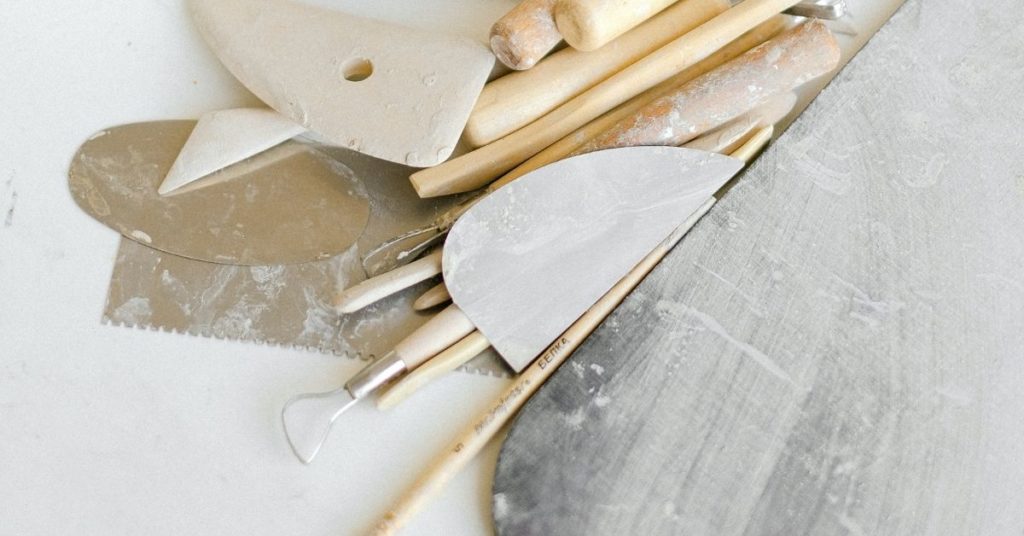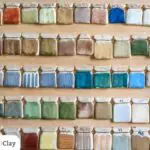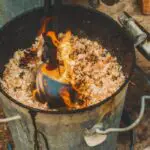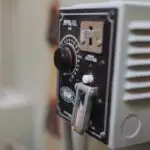Slip and score is a part of joining clay pieces together. In this article, we’ll explore what slip and score is, how to make slip, and what you need to accomplish this clay process.
What is slip and score?
Slip and score in pottery is a technique used to join two pieces of clay together. To slip and score clay, a potter scratches marks on the surface of the clay (score). The potter then applies a liquid mixture of clay in water (slip) to the scored surface.
The two clay parts are joined with some light pressure to the slip and scored areas.
What is slip in ceramics?
Clay slip is a liquid mixture of clay in water. You’ll sometimes hear slip referred to as clay slurry or slurry of clay. It has a consistency of heavy cream though it can be runnier depending on what you’re using it for.
Slip is commonly used for decoration, pouring moulds, and acting as an adhesive when joining ceramic materials. For this article, we’re talking about slip that’s used in joining two pieces together.
What is scoring in ceramics?
Scoring in ceramics is scratching marks on the surface of the clay in order to join two pieces.
The goal here is to create indentions on the clay surfaces that are being joined for slip to seep into. Potters slip acts as a binding agent for the clay particles. The scoring allows the binding agent to more wholly adhere the two pieces in a structurally sound way.
To score, a potter takes a sharp object and creates notches into the clay on the surface that will be joined. The score marks should be shallow. Though not too shallow as we get into in the common mistakes section below.
How to make slip
Making pottery slip is essentially mixing clay and water together. It’s a straightforward, albeit messy, process. Here are the 6 steps:
- Collect clay scraps and drier pieces of clay blocks
- Break up the clay slabs into coin-sized pieces
- Add your clay to water in soak
- Blend the clay/water mix with a kitchen blender
- Straining your slip to make it absolutely smooth
- Store the pottery slip so that it maintains its consistency
Read our post “how to make clay slip” for a full walk-through with pictures.
Scoring clay tools
There are specific tools made for scoring clay. The two main slip scoring tools are the clay slip rectifier and the clay slip scorer. This sculpting toolkit includes a scoring tool and a handful of other tools that are useful for ceramics.
Tools made specifically for scoring will be your best bet. But you don’t need specific tools to properly score grooves. Household options like a pencil, unfolded paper clip, fork, toothpicks, or any other sharp tool can do the job.
What I would avoid is any object that doesn’t allow you to evenly score the surface of the clay. You do want to make sure the score and slip technique is done properly. Otherwise, your vessel could have a weak spot and come apart during firing.
When would you use the slip and score method?
Handbuilding
A common task of the slip score technique is on a handbuilding project. Part of handbuilding is to score and slip clay to bind together clay coils or slab-built pieces.
You can read more about handbuilding in our article “handbuilding pottery – a complete guide“.
Handles
Another way ceramic artists would use slip and score would be to add handles to mugs, pitchers, and similar vessels. Hatch marks are added to the handle and the clay body. Then applying a joining slip will adhere the handle to the vessel.
Decoration
Say you have a part of your piece that will attach to the outside of the clay body. A simple solution would be to make two different vessels and combine them with the slip and score method.
As an aside, you can also use potters slip to decorate vessels with a process is called slip trailing. We have a whole article on the different uses of clay slip.
3 common mistakes with the slip and score technique
1. Rushing the score and slip process
You art teachers out there are well aware of this pitfall. 😉
If you’ve been doing pottery for a while, you already know rushing is a cardinal sin. Sure, sometimes you’ve got to boogie to get the glaze on at the right temperature or something like that. But when working with wet clay, it’s best to take your time.
There’s no exception with slip and score. Take your time to get the score marks in the right location and the right depth. Make sure the slip is applied to the whole surface. These steps are easier to do when you’re taking your time.
2. Not having the right slip consistency
Clay slips have different consistency based on what the material is being used for. For instance, a mould slip is made to be thicker while a clay slip (the one used to join clay) is on the runnier side.
To avoid this mistake, I would make slip for each joining project in the right water/clay ratio. Or I would be vigilant to label my stored-away slip.
Learn all about clay slip on our blog.
3. Not scoring deep enough
This is a regular slip and score error: Scoring allows for the slip to seep into each of the two clay parts that you’re joining and act as a glue. The slip fills in the gaps and fortifies the joined point for firing.
If the score marks are shallow, your two clay points won’t be firmly joined. This can create a weak spot in the structure which could lead to disaster in the kiln.
Conclusion
The slip and score method is a great way to join two pieces during a ceramics project. Be sure to check out our article all about clay slip to get acquainted with this critical substance.
If you have questions, please let us know! You can email hello@wheelandclay.com.







